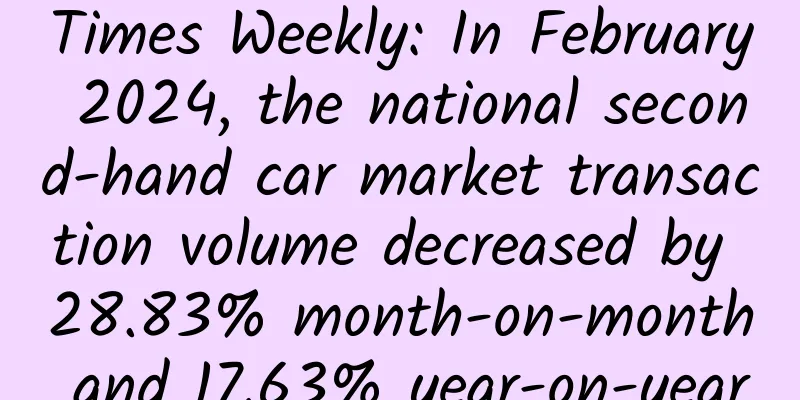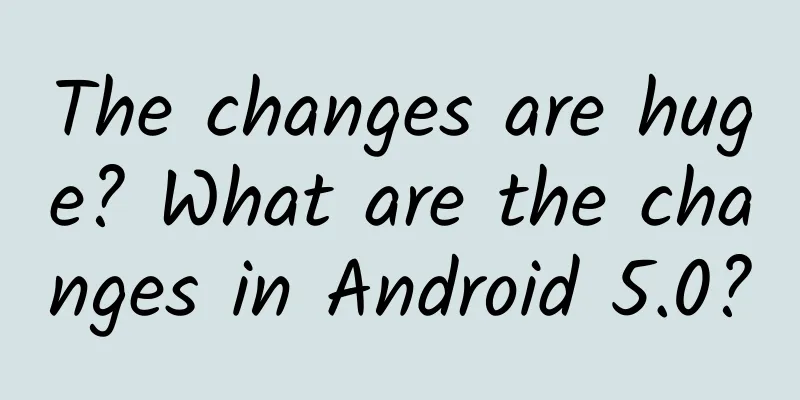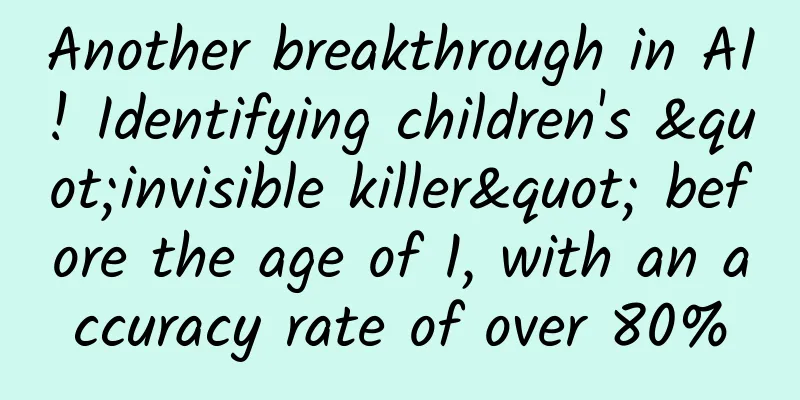Times Weekly: In February 2024, the national second-hand car market transaction volume decreased by 28.83% month-on-month and 17.63% year-on-year

|
"Boss, are you selling a car? We're buying it for a high price. You can come to our store first." Almost every day, Li Lei's (pseudonym) colleagues stand outside the gate of Beijing Huaxiang Second-hand Car Market (hereinafter referred to as "Huaxiang Second-hand Car Market") and shout to the vehicles passing by on the roadside. From time to time, a few cars will follow these colleagues into the market yard. This is the largest second-hand car market in Beijing, also known as the "Beijing Used Motor Vehicle Trading Market". Since its establishment in 1985, Huaxiang Second-hand Car Market has accommodated hundreds of second-hand car merchants, and Li Lei is a salesperson at one of them. On a beautiful Saturday in early March, Li Lei, who was on duty at the store, sat between a row of vehicles for sale, looking up from time to time at the passers-by. Although there were hundreds of spectators in the market that day, they were scattered among hundreds of merchants, so there were not many potential customers at Li Lei's door. "The demand for car purchases before the Spring Festival has been absorbed. There will be fewer people after the festival, but this is normal," said Li Lei. This is a microcosm of the domestic second-hand car market in February this year. According to data provided by the China Automobile Dealers Association, the national second-hand car market transaction volume in February this year was 1.2016 million vehicles, a month-on-month decrease of 28.83% and a year-on-year decrease of 17.63%. The transaction amount was 83.608 billion yuan, a month-on-month decrease of 25.6%. Coinciding with the Spring Festival, the car market was not as hot as usual. In the first two months of this year, the overall transaction volume of the domestic used car market has increased year-on-year, and the average transaction price has increased year-on-year. However, with the price of new energy vehicles falling again after the Spring Festival, the chill has filled all practitioners, and the sharp price cut of new energy models has made used car dealers in a dilemma. Are new cars cheaper than used cars? The price reduction of new energy vehicles has caused headaches for both car owners and used car dealers. "The new Qin PLUS is already 79,800 yuan. Can a second-hand Qin PLUS still be sold for 80,000 yuan?" Faced with a new round of price cuts after the New Year, Zhao Jie (pseudonym), the manager in charge of the used car business at a BYD Dynasty online store in Tongzhou District, Beijing, described the price dilemma of used cars in the store. The second-hand car area of a BYD store in Tongzhou, Beijing. Photo by a Times Weekly reporter. Since February 19 this year, BYD has launched more than ten new models including the Honor Edition Qin PLUS, Destroyer 05, Han, and Tang, and further reduced prices based on last year's price cuts. For example, the starting price of Qin PLUS has dropped from 99,800 yuan last year to 79,800 yuan; the starting price of Han DM-i has dropped from 189,800 yuan last year to 169,800 yuan. After BYD launched a new round of low-price offensive, many manufacturers such as Changan Automobile and Geely Automobile followed suit and launched new energy models with lower prices than in previous years. Many manufacturers have seen a significant increase in car sales. Taking BYD as an example, market information shows that BYD's sales have increased rapidly since the launch of the Honor Edition model, and its sales in March are expected to exceed 300,000 units. As new cars are sold at a low price, car owners and used car dealers can no longer sit still. The transaction prices of their used new energy vehicles have plummeted along with the new cars. In Zhao Jie's second-hand car display area, there are a total of 5 new energy vehicles, most of which were bought before the Spring Festival. With the price reduction of new cars, both the car owners and Zhao Jie had to "cut their losses". "I just bought a 2023 Song PLUS DM-i model these days. The car is in good condition and has only traveled more than 7,000 kilometers." Zhao Jie showed the reporter the payment information on his mobile phone: "This car was sold for more than 150,000 yuan last year. I bought it back from the owner for 98,000 yuan, and it depreciated by one third in a year." Just a month ago, this used car could be sold for more than 110,000 yuan. However, as the price of the new Song PLUS DM-i dropped to 129,800 yuan at the end of February this year, the 110,000 yuan used Song PLUS DM-i has lost its appeal to consumers. "The price of new cars has dropped by 30,000 yuan, and the price of used cars will also drop by at least 20,000 to 30,000 yuan," said Zhao Jie. Song PLUS is one of BYD's flagship products, with sales of 360,000 units in the past year. Despite its popularity, second-hand Song PLUS has not been immune to price cuts. BYD Han and other popular new energy models, such as Han EV, are in the same predicament. Diagonally opposite Li Lei's store, there is a used 2023 Han EV flagship car parked. The dealer told the Times Weekly reporter that the car was bought before the Spring Festival. The previous owner spent nearly 300,000 yuan to buy it, and now the dealer hopes to sell it for 180,000 yuan. The Han EV parked in the market. Photo taken by a reporter from Time Weekly. Although the price has been discounted by nearly 40% over the past year, this Han EV is still hard to sell - it has been parked on the roadside for nearly two months and is a used car with a long inventory. Currently, the starting price of the new Han EV is 179,800 yuan. The dealer of this Han EV was quite proud when talking about the condition and configuration of the car, especially the mileage of just over 10,000 kilometers made him very confident about the condition of the car. However, when the reporter asked about the price again, he said "it can still be negotiated." The situation encountered by online used car platforms is similar to that encountered by offline used car markets. Zhang Yanwei, COO of Tiantianpaiche, told the Times Weekly reporter that the price reduction of new energy vehicles is a double-edged sword: on the one hand, it promotes replacement, and a large number of cars in good condition can flow into the used car market, pushing up the platform's used car transaction volume; on the other hand, the price reduction of new cars has lowered the value retention rate. For car owners, it is difficult to achieve the expected selling price, especially for second-hand cars that are 1-2 years old. "The most affected are domestic new energy vehicles, especially brand car series that have recently seen large price cuts and promotions, as well as car series from similar brands," said Zhang Yanwei. Used car dealers don't believe in new energy In order to avoid losses, many used car dealers refuse to sell new energy vehicles. Generally speaking, the ideal turnover cycle from car purchase to car sale is 15 days. Before the price war in the car market, second-hand car dealers could still earn the price difference of new energy vehicles through rapid turnover. However, with the round after round of price cuts of new energy vehicles, the purchase and sale price difference in the second-hand car market has been further compressed, and even reversed. Frequent price cuts have put forward higher requirements for the circulation speed of second-hand new energy vehicles - merchants need to sell them faster and faster. Over time, many practitioners have lost confidence in second-hand new energy vehicles. "The most direct manifestation in the short term is that there are more cars available and the prices are more affordable. This is a good thing for used car consumers, but a challenge for merchants." A relevant person in charge of Guazi Used Cars described the current situation of the used car market after the price reduction of new cars. Haier's used car brand Kataichi in the market. Photo by a Times Weekly reporter. In the Huaxiang second-hand car market, there are thousands of second-hand cars lined up in front of hundreds of shops. But when visiting, the Times Weekly reporter found that there were very few new energy vehicles. There were only a few second-hand cars of popular new energy vehicle brands such as Weilai and Zeekr. Even BYD and Tesla may not have one car in each shop on average. "Unlike the hot-selling new cars, new energy vehicles are not well received by merchants here," said Li Lei. Li Lei told reporters that the merchant opposite him bought a second-hand Zeekr 001 before the New Year, but has not been able to sell it yet. "Before the New Year, the price of a new Zeekr 001 was nearly 300,000 yuan, but after the New Year, the new model only starts at 250,000 yuan." Li Lei said: "The new car has been reduced by 50,000 yuan, but the merchant owner is unwilling to reduce it by 50,000 yuan because it will lose money." Many used car dealers are facing similar problems when trading new energy vehicles - the price of new cars is inverted, and old cars are difficult to sell without price reduction, and they will lose money if the price is reduced. "Stuck in hand" or "selling at a loss" is a headache for used car dealers. In this context, many second-hand car dealers will not easily buy second-hand new energy vehicles unless such second-hand new energy vehicles are both popular and their prices are relatively stable. "If you must buy new energy vehicles, Tesla is an option," another employee of Huaxiang second-hand car trading market told the Times Weekly reporter. The employee bought a Tesla Model Y in mid-March, which is a 2021 standard range version with a mileage of 30,000 kilometers. The official price of the car in 2021 is 290,000 yuan, and the employee quoted 208,000 yuan, which is equivalent to a depreciation of 28.3% in 3 years. This depreciation rate is much lower than most other brands of second-hand new energy vehicles. The above employee's Tesla Model Y in the store. Photo provided by the interviewee. In the view of industry insiders, Tesla's high second-hand car value retention rate comes from two factors: best-selling and stable prices. In the domestic market, Tesla Model Y sales in the past 12 months were close to 470,000 units, making it the best-selling model in China. Its price remained stable at more than 250,000 yuan throughout 2023. Even on March 20, the relevant person in charge of Tesla China told the reporter of Time Weekly that Tesla will officially increase the price on April 1, and the price of Model Y will be increased by 5,000 yuan; at the same time, the current official insurance subsidy policy of 8,000 yuan for existing vehicles and the paint exemption policy of up to 10,000 yuan will also expire on March 31. The actual price increase of this price adjustment is up to 23,000 yuan. But in the current auto market, there are too few new energy vehicles that retain their value, and there are more new energy vehicles that do not retain their value. Next to Li Lei, there is a 2022 NIO ES6 parked. The starting price of this car was as high as 386,000 yuan that year, but it is now only sold for 170,000 yuan. This is not the worst. In contrast, most unpopular new energy vehicles are not even eligible to appear in the second-hand market. The price of new vehicles of this type is usually less than 150,000 yuan, and the price of second-hand vehicles is only 10,000 yuan. Difficult to circulate and without profit margins, these unpopular second-hand new energy vehicles have been lost in the price cut trend. At a Changan Automobile store in Beijing, a staff member in charge of used car business even told reporters bluntly: "There is no room for price reduction or possibility of selling recycled new energy vehicles. Generally, the cars are collected just to obtain subsidies from manufacturers." "Most of the merchants in the park deal in fuel vehicles, and only one or two focus on second-hand transactions of new energy vehicles." Li Lei said: "Many times, merchants buy new energy vehicles just to try it out and see if the new energy vehicle business can be successful." The circulation of second-hand new energy vehicles has become a problem. It will take time to subvert fuel vehicles Compared with the monthly retail penetration rate of new energy vehicles rapidly approaching 50%, the used car market is still dominated by fuel vehicles. Walking in Beijing's largest second-hand car market, the various brands of fuel-powered vehicles seem to make people forget the arrival of the new energy vehicle era - Mercedes-Benz, BMW, Audi, Toyota, Land Rover, Lexus, Porsche and many other fuel-powered models occupy the vast majority of the booths. As Li Lei said, "People who go to the used car market to buy cars are all looking at fuel-powered cars, and used car dealers also sell fuel-powered cars." Li Lei's words may be a bit exaggerated. But here, the Volvo XC60, with an average monthly sales of about 5,000 new cars, is more common than the Tesla Model Y, with an average monthly sales of over 40,000; the Mercedes-Benz E-Class has more spectators than the BYD Han; and when it comes to price, both buyers and sellers have fewer concerns about the price cuts of new cars causing a sharp depreciation. Comparison of monthly transaction ratios of fuel/new energy used cars on Tiantianpaiche platform in 2023, Tiantianpaiche supply This is also reflected in the tones of the shouts of colleagues outside the gate of Huaxiang Second-hand Car Market - whenever a fuel vehicle passes by, the shouts of colleagues rise one after another; but when a new energy vehicle passes by, the scene often seems unusually quiet, with only the sound of car horns breaking the surrounding silence. Mercedes-Benz E300L in Li Lei's store. Photo by a reporter from Time Weekly. In Li Lei's store, luxury brands such as Mercedes-Benz, Audi, and Porsche account for the majority of cars. The prices of these brands are relatively stable, and luxury brands have a large price range, making it easier to make money. "For every car sold, I can get a commission of 500 yuan or even higher depending on the transaction price." Li Lei said that his monthly income can reach more than 10,000 yuan. In addition to luxury brands, mainstream Japanese and German brands such as Toyota, Honda, and Volkswagen are also popular in the market. However, domestic brands of fuel vehicles are rare in the market. Practitioners said that most domestic brands of fuel vehicles are sold at low prices and do not have sufficient profit margins. The fact that there are many fuel vehicles in the second-hand car market is not entirely due to the frequent price cuts of new energy vehicles. Statistics from the Ministry of Public Security show that by the end of 2023, China's new energy vehicle ownership will be 20.41 million, accounting for 6.07% of the total number of vehicles. The limited ownership is not enough to support a large number of new energy vehicles entering the second-hand car market. Therefore, in the second-hand car market, new energy vehicles do not have an advantage over fuel vehicles. However, with the price reduction of new energy vehicles, new energy vehicles represented by BYD Qin PLUS have entered the price range of second-hand fuel vehicles. Buying new energy vehicles at the price of second-hand fuel vehicles has become the choice of many consumers. As a result, the price of second-hand fuel vehicles has also declined to a certain extent. "On the Tiantianpaiche platform, the three-year average value retention rate of fuel vehicles in 2023 was 58.3%, and the current level is 55.8%; the three-year average value retention rate of new energy vehicles in 2023 was 53.3%, and the current data is 46.5%, both showing a slight decline." Zhang Yanwei revealed. A relevant person in charge of Guazi Used Cars also told the reporter from the Times Weekly that the price war for new cars had already begun in 2023. Coupled with the popularity of new energy vehicles, the supply in the used car market exceeds demand, which has led to a decline in the overall transaction price in the used car market. Fuel vehicles are still the main force in the used car market, but as the ownership rate of new energy vehicles increases and the price system stabilizes, the spring breeze of new energy vehicles may eventually blow to this land. "The total transaction volume of new energy vehicles for the whole year only accounted for 7.6% of the total transaction volume of used vehicles on the platform. However, the overall trend of the transaction volume for the whole year was upward, which was due to the concentrated sales of new energy vehicles after they were put on the market in the past few years," said Zhang Yanwei. This may mean that as the number of new energy vehicles increases, the price system of its second-hand market is expected to stabilize and achieve healthy development. Several senior industry insiders told the Times Weekly reporter that used car prices are changing faster and dealers need to transform and upgrade more actively. They can use Internet platforms and professional tools for analysis and operations, and enhance specialization and precision in sourcing cars and acquiring customers to improve efficiency, service quality and reputation. From Times Finance |
<<: I understand that Apple Watch detects heart rate this way
Recommend
Analysis of 12 brand cases: core selling points and selling point copywriting
Are you still using mediocre words like "exc...
What would happen if the Samsung Note 7 had not been recalled?
According to foreign media reports, the farce of ...
7-day XMindZEN vertical screen course
This course is suitable for those who have no bas...
B2B social media marketing strategy tips!
In this article, I highlight some of his findings...
A zero-cost shopping and money-making project, with 200+ order numbers a day, you can magnify the operation, come and watch!
There are still more than 70 days left in 2021. D...
Chery Fengyun T9 and BYD Song L DM-i, which one is more worth buying?
On October 13, Chery announced the launch of its ...
Tips for creating hot headlines for Toutiao today!
There is a sentence in the "Copywriting Trai...
Even if they are not related, people who look alike share a lot of the same DNA?
Are there two people in the world who look extrem...
Google advertising promotion, how to position Google display ads?
Everyone knows that Google search ads are directl...
How to write World Cup copy? Here are some ready-made…
The World Cup is coming, how can copywriters scor...
Is the popular sleep aid “white noise” fake science or real scam?
"My eyes were as big as bells, and I tossed ...
How to effectively promote APP soft articles?
APP soft articles are roughly classified The firs...
New media operation: data mining method!
Unlike traditional marketing and promotion method...
"Hot Fox Project" Video Account 1.0 must-have gameplay, WeChat Video Account has no source + no live broadcast
"Hot Fox Project" Video Account 1.0 mus...
A comprehensive analysis of Pinduoduo’s “Get Cash Every Day” campaign!
Regarding Pinduoduo 's "Get Cash Every D...









